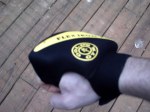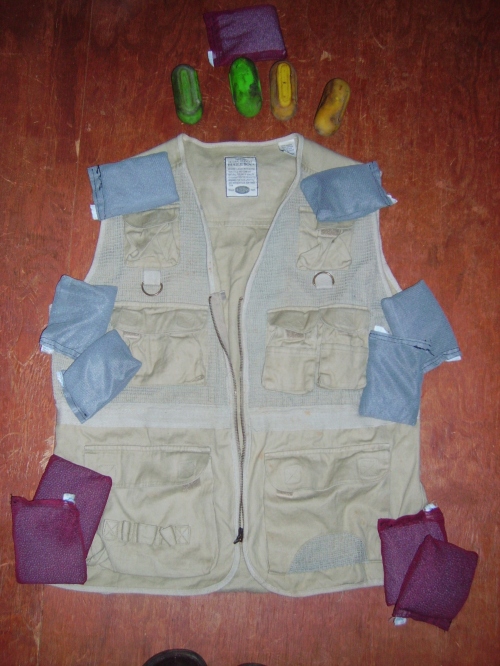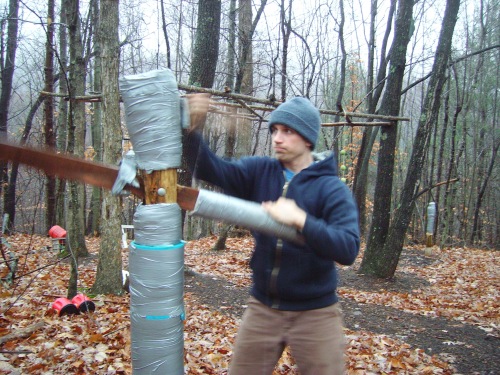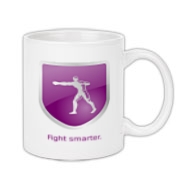Specificity of training is the basis on which all modern physical training rests. Briefly, to produce a desired physiological adaptation, a training program must place sufficient stress on the physiological systems in question (Willmore & Costill, 2004). In training environments this is commonly referred to as Specific Adaptations to Imposed Demands (SAID). Adaptations to training are limited to the physiological system overloaded by the program. This includes neuromotor, morphological, hormonal and metabolic elements. Fighting activities (encompassing both combat sports and fighting/self protection scenarios) present a unique programming challenge, requiring a range of adaptations to all systems.
FSRI Contributors:
- Gillian Russell
- David Chopper Campbell
- kevinpreilly
- Randy Simpson, M.S.
- Robert Miller CPT CES PES
-
Recent Posts
Anatomy Resources
Blogroll
DIY Training Equipment
FSRI Clubs
FSRI Original Research
- Change Blindness and it's Relationship to Training
- Understanding Karate by De-emphasizing Kata
- Applying Sports Science to the Fighting Arts
- Bernard Bettelheim: The Misadventures of a Missionary in 18th Century Okinawa
- More on Perception: Don't Just Rely on Visual Input
- More on Rhabdomyolysis and the Fighting Arts
- Evidence Based Practice in the Fighting Arts: Appraisal and Suggestions
- Epistemic Viciousness in the Martial Arts
FSRI Training/Teaching Resources
- Health, Injuries, Limitations, and Challenges
- Injury Comeback Story: complete ACL tear (part 1)
- Regarding hurdler's Stretches and Kicking
- Thoracic Outlet Syndrome-What You Should Know
- Basic Thoracic Spine Injury Prevention for Fighting Arts & Combat Sports
- Basic Physical Training Resources for Fighting Arts Practitioners, pt. 2
- Get More Out of Your Chishi With Proper Kinematics
- Stretches for Striking
- Spinal Overuse Injuries in the Fighting Arts: Risk Factors and Prevention Strategies
- Development of Expertise in the Fighting Arts- Some Basic Notes
Mugs and T-shirts
Recommended Fighting Arts
Recommended Trainers
Research Resources
- Journal of Combative Sport
- Stick Grappler's Martial Arts Archives
- The British Journal of Sports Medicine
- InYo:The Journal of Alternative Perspectives on the Martial Arts and Sciences
- Journal of Athletic Training
- University of Hawaii Okinawa Collection: Digitized versions of historical karate texts
- Journal of Sports Science and Medicine
- Athletic Insight: The Online Journal of Sport Psychology
- Internet Public Library
- Google Books
Resources for Women Dealing with Violence
- Violence against women related resources at feminist.com
- "911 for Women" Links Page for the Feminist Majority Foundation
- Domestic Violence and Abuse: Help, Treatment, Intervention, and Prevention at Helpguide.org
- National Coalition Against Domestic Violence
- Domestic Violence Agencies on the Internet
Strength & Conditioning Resources
- National Exercise & Sports Trainers Association
- Ex Rx
- Sports Fitness Advisor
- ACL Injury Prevention for Female Athletes (PEP Program)
- Race Rx Labs
- Link Related to the Q Angle
- National Academy of Sports Medicine
- Beast Skills Tutorials
- Fitness for the Fighting Arts
- Female Athletes and Serious Knee Injuries
Useful Misc. Links
Past Articles:

![IMG_0730[1]](https://fightsciencesresearchinstitute.files.wordpress.com/2011/10/img_07301.jpg?w=300&h=225)
















 are available here.
are available here.